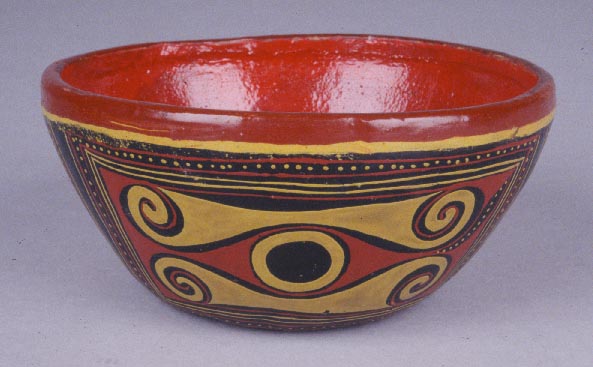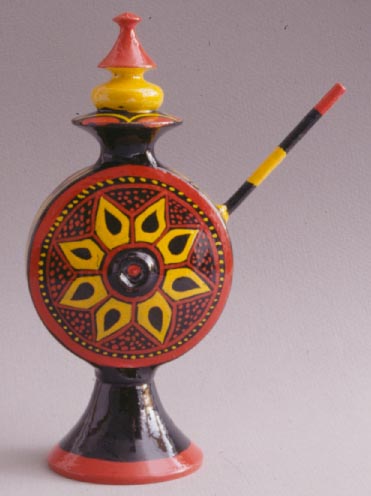Village:
According to Jjivo Mnyu, the Jivo clan of Apu Village, Xide County, where we purchased many of our pieces, has been making painted wooden utensils for over 10 generations, and today's dishes are the finest ever produced. The Jivo taught members of the Apu clan how to make the dishes when the Apu moved to Laku Hamlet about 30 years ago.
Only men work the lathes. Typically, boys learn the art of turning when they are in their mid-teens. The turned dish belongs to the carver, the two guys who work the foot pedals do not get any share, but people trade around.
Both men and women can and do paint the designs. Painted designs are individual, and recognizable.
The wood for larger dishes (ceti, shepi, kuzzur) is 'ngehni,' a kind of wild cherry and is purchased in the market. The wood for the spoons (itchyr) is 'shoma,' or rhododendron, and is cut in the neighboring hills. Black pigment is made from locally available minerals; red is ordered by mail from Guangdong; yellow is by mail from Yunnan.



